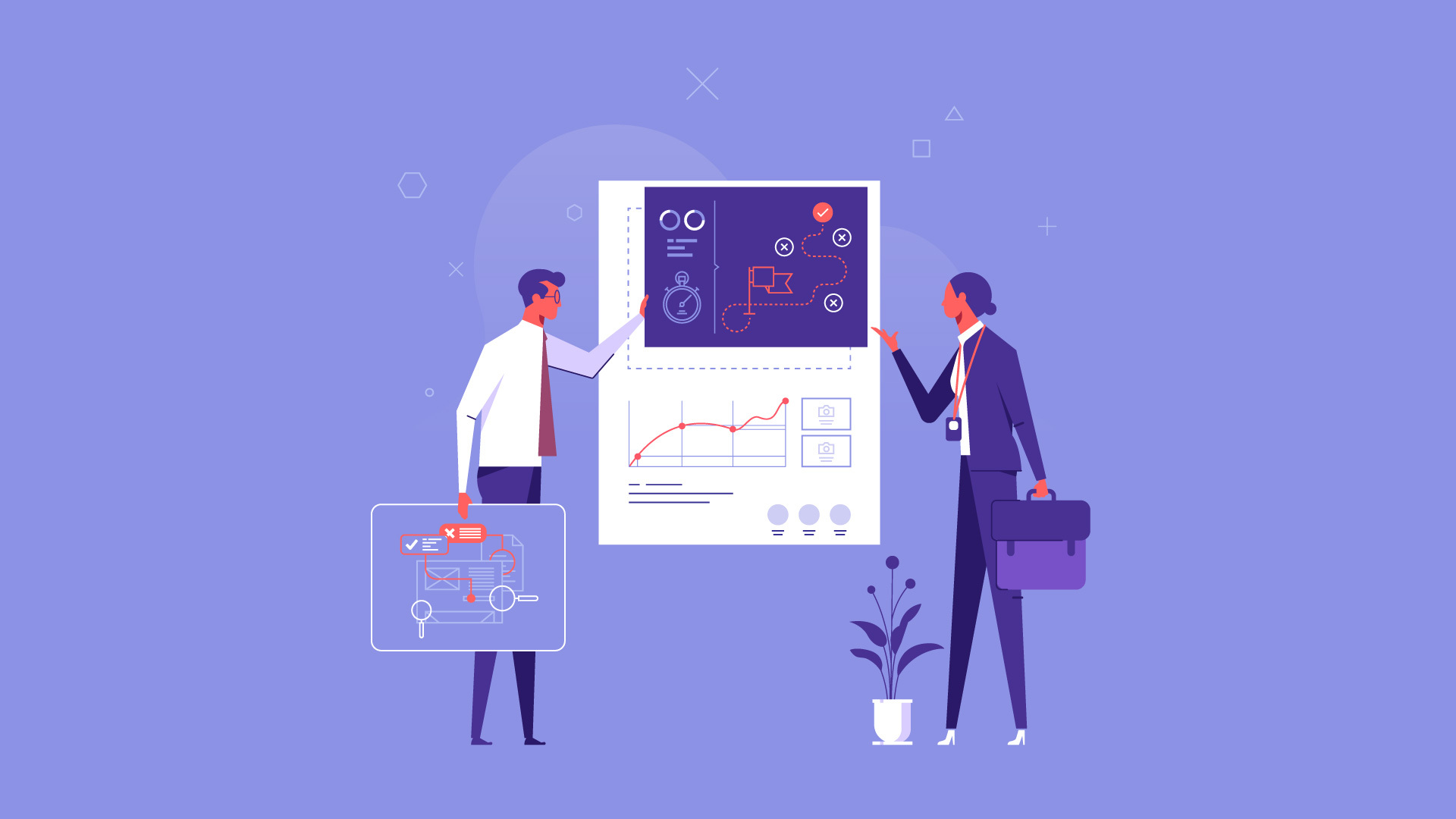Empowering Business Leaders: The Critical Shift to Business-Centric Observability for Competitive Advantage
- Mar 26, 2024
- Blogs
- 5 min read
How journey monitoring can surmount challenges that business leaders face with traditional observability
Business teams are increasingly turning to technology to drive differentiation in today’s fiercely competitive marketplace. They are constantly pursuing augmented intelligence through sophisticated systems and rich data analysis, to make informed decisions that not only enhance customer experiences but also drive greater engagement, thus solidifying their position in the market. The ever-evolving nature of technology, the complexity of business operations, and the increasing focus on customer experience have rendered traditional observability tools inadequate in providing a comprehensive understanding of the intricacies that shape a company’s success.
In this article, we briefly shed light on the problems that business leaders encounter with conventional observability methods and explore a transformative solution – business-centric observability. We uncover how adopting a customer journey-focused approach can shape the way businesses monitor and optimize their operations.
Why traditional observability is not enough
Business leaders dealing with traditional observability face an array of challenges, each posing a significant threat to the smooth functioning and reputation of their organizations.
- Firstly, the overwhelming volume of data generated by conventional observability tools ends up inundating leaders with an excess of information that is often almost impossible to distill into actionable insights. This information overload not only hampers decision-making processes but also creates a barrier to extracting meaningful, strategic intelligence.
- Secondly, the reactive nature of issue resolution in traditional observability compounds the problem, resulting in delayed responses that can lead to negative customer feedback and, in extreme cases, adverse public relations. The stakes are higher than ever in the era of social media where brand reputations are built and shattered in the blink of an eye.
- Thirdly, business leaders increasingly rely on IT Operations teams for crucial visibility into systems, insights, and performance reports to make informed decisions. However, traditional observability tools often pose challenges in providing the comprehensive insights needed. These tools typically offer fragmented data views, lacking integration with business context and customer experiences. Without a unified view, identifying trends, predicting issues, and optimizing operations become cumbersome tasks, hindering agility and competitiveness.
- Lastly, the imperative of regulatory compliance and audits adds a layer of complexity. Traditional observability tools often fall short of providing the necessary transparency and compliance assurances, leaving business leaders vulnerable to regulatory pitfalls.
As business leaders navigate these challenges, a paradigm shift towards business-centric observability becomes essential, enabling not only streamlined operations but also proactive measures to safeguard against potential crises.
Traditional vs. Modern BizOps with Business-Centric Observability
In a landscape where customer expectations are paramount, understanding their journey becomes imperative. Business-centric observability not only addresses the limitations of traditional methods but also empowers leaders to gain valuable insights into customer interactions, enabling them to make informed decisions that drive growth and foster long-term success.
Let’s examine how business-centric or user experience-centric observability has the potential to transform the way business leaders operate in an enterprise:
Traditional Business Operations | With Business-centric Observability | |
Real-time view of business performance metrics | Business leaders rely on technical metrics provided by observability tools but may have limited visibility into how these metrics impact the overall user experience and business outcomes. | Business leaders gain insights into how technical performance directly influences user interactions and critical business processes. This can be done through business lead indicators to flag deteriorating customer experiences and indices like user experience index, which distill a plethora of metrics into a single indicative index for quick decision-making. |
Collaboration with other teams in addressing and understanding issues | Collaboration between technical and business teams may be limited with traditional observability tools, leading to challenges in understanding and addressing business-impacting issues. | Development, operations, and business teams are aligned on the impact of technical performance on business processes due to a shared understanding of business journeys. |
Proactive Issue Resolution to Maximize Uptime | Issue response may be reactive, with leaders addressing problems after they impact users, without a clear understanding of the broader business impact. This causes customer complaints on social media and the brand image taking a hit. | Business-centric observability enables proactive issue identification within the context of business journeys, allowing leaders to respond swiftly and minimize business disruptions. |
Confidence to handle Regulatory Compliance | Reactive approach to compliance checks and monitoring. Greater risk of regulatory penalties due to unexpected downtime and customer experience issues. | Proactive incorporation of new compliance checks, ensuring continuous compliance. |
Improved Decision-making and Insights | Technical and business teams may operate in silos, leading to challenges in communication and collaboration. Decision-making may lack comprehensive insights into how technical changes align with broader business objectives. | Business-centric observability fosters collaboration between technical and business teams, promoting a shared understanding of how technical changes influence business outcomes. It provides leaders with a unified view of real-time journey data, enabling them to make informed decisions that consider both technical and business perspectives. |
The Future of Business Operations with Business-Centric Observability
User-Centric Decision-Making
Business leaders can adopt a user-centric approach to decision-making, understanding how technical changes directly influence the user experience and contribute to business goals.
Business Lead Indicators for Proactive Risk Mitigation
Business-centric observability contributes to proactive risk mitigation as leaders use real-time insights to identify potential issues and take preventive measures before they escalate. To know more, read the section on “Aligning SREs with Business Teams for Data-driven Decision Making” in our blog on the Role of Observability in your IT Transformation Initiatives.
Faster Adaptation to Changing Business Needs
Leaders become more agile in adapting to changing business needs, leveraging insights from business-centric observability to respond quickly to evolving market conditions. This includes making decisions about product releases, market expansions, partnerships and resource allocations based on a real-time understanding of how technical changes impact the business.
Continuous Regulatory Compliance
Business journey observability provides insights into potential customer experience issues before they escalate. Business leaders will play a key role in using these insights to ensure regulatory compliance (for example, banking regulators might impose penalties on banks where technical or business declines exceed a certain threshold per month, in terms of number of incidents and duration of downtime), and to proactively address risks associated with technical operations. To know more, read the section on “Enhancing Regulatory Compliance” in our blog on the Role of Observability in your IT Transformation Initiatives.
Data-Driven Decision-Making
Modern business leaders will increasingly rely on real-time data from observability platforms to make informed decisions. For instance, operational dashboards that show integrated journey views across silos can alert leaders on deteriorating business journeys in a particular network segment or due to a slow API, and BizOps teams can make quick decisions on capacity allocation, switching channel partners or API providers.
Conclusion
Embracing a business-centric perspective in observability can provide a clearer, more nuanced picture of your organization’s performance. As a result, business-centric observability elevates the role of modern business leaders from decision-makers based on intuition to leaders who leverage real-time data for strategic, collaborative, and customer-centric decision-making. This evolution is essential to steer your organization towards success in a competitive market, where technology and business are increasingly interconnected.












